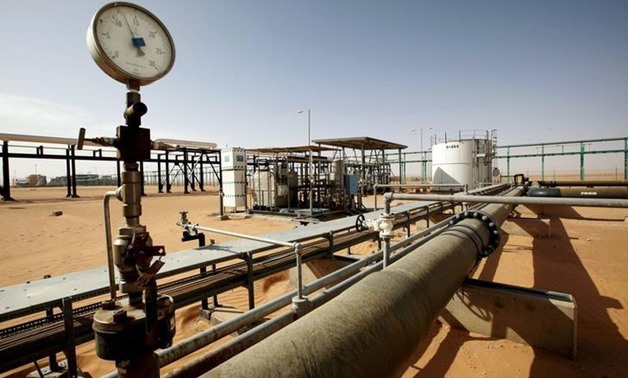
FILE PHOTO: A general view of the El Sharara oilfield, Libya December 3, 2014. REUTERS/Ismail Zitouny/File Photo
NEW YORK - 27 June 2019: Oil prices rose more than 2% on Wednesday and hit their highest in about a month, buoyed by U.S. government data that showed a larger-than-expected drawdown in crude stocks as exports hit a record high, and surprise drops in refined product stockpiles.
Brent crude futures rose $1.44, or 2.2%, to settle at $66.49 a barrel. U.S. West Texas Intermediate (WTI) crude futures rose $1.55, or 2.7%, to settle at $59.38 a barrel.
Crude inventories fell 12.8 million barrels last week, the Energy Information Administration said, far surpassing analyst expectations for a decrease of 2.5 million barrels. That was the most since September 2016, according to the statistical arm of the Department of Energy.
Net U.S. crude imports fell last week by 1.2 million barrels per day (bpd). Overall crude exports rose to 3.8 million bpd, beating its previous record of 3.6 million bpd in February.
“A lot of this drawdown is due to strong demand,” said Phil Flynn, an analyst at Price Futures Group in Chicago. “We’re finally seeing the impact of OPEC production cuts and starting to see Venezuelan cuts.”
Gasoline stocks fell by 996,000 barrels, while distillate stockpiles fell by 2.4 million barrels, the EIA data showed.
The product drawdown comes at the same time as news that the largest and oldest refinery on the U.S. East Coast will be shut after a massive fire last week caused substantial damage.
Philadelphia Energy Solutions plans to shut down the 335,000 bpd refinery complex next month, the Philadelphia mayor confirmed after two sources told Reuters about the plans.
U.S. gasoline futures were up 4% after climbing to their highest since May 23 in overnight trade.
“Since the (EIA) data didn’t likely pick up the full impact of the PES down time, an additional sharp reduction in PADD 1 gasoline supplies appears likely in next week’s EIA data,” Jim Ritterbusch of Ritterbusch and Associates said in a note.
The crude inventory fall and refinery outage added to uncertainty over oil supplies created by the war of words between Washington and Tehran. This has prompted fears that oil shipments through the Strait of Hormuz, the world’s busiest oil supply route, could be disrupted.
Asked if a war was brewing, U.S. President Donald Trump told Fox Business Network on Wednesday: “I hope we don’t but we’re in a very strong position if something should happen.” Tehran has condemned a fresh round of U.S. sanctions as “mentally retarded.”
Bilateral tensions spiked anew after Iran shot down a U.S. drone last week in the Gulf. Relations have been tense since Washington blamed attacks on oil tankers just outside the Gulf on Iran, while Tehran has denied any role.
In the search for longer term direction, markets will watch the G20 meeting this weekend followed by a meeting of the Organization of the Petroleum Exporting Countries and non-OPEC producers, a group known as OPEC+, taking place on July 1-2.
The group is due to discuss extending output cuts for the second half of this year.
Russia’s average oil output was 11.15 million bpd in the period June 1-25, up from an average of 11.04 million bpd during June 1-10, two sources familiar with official data said on Wednesday.


Comments
Leave a Comment